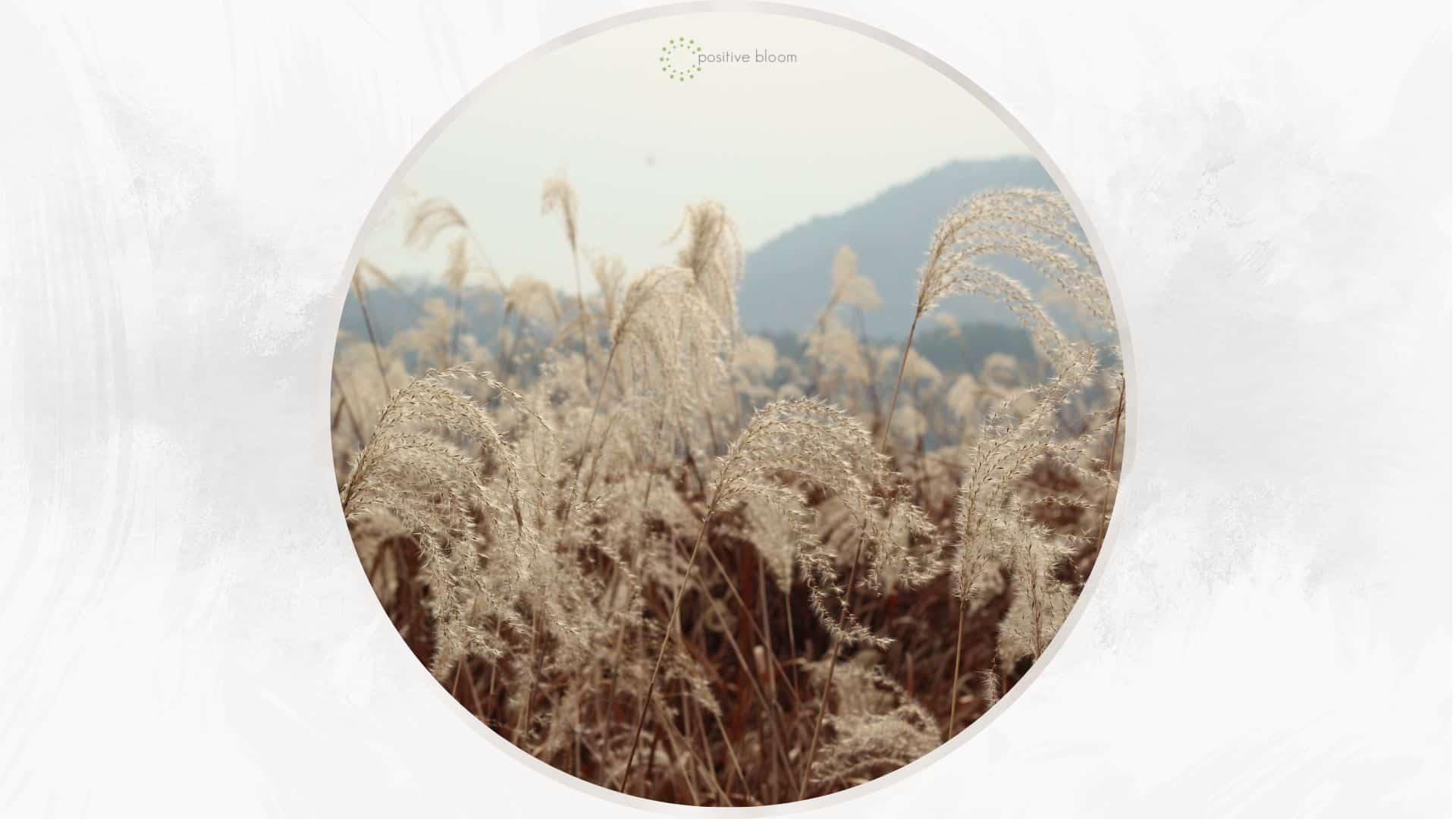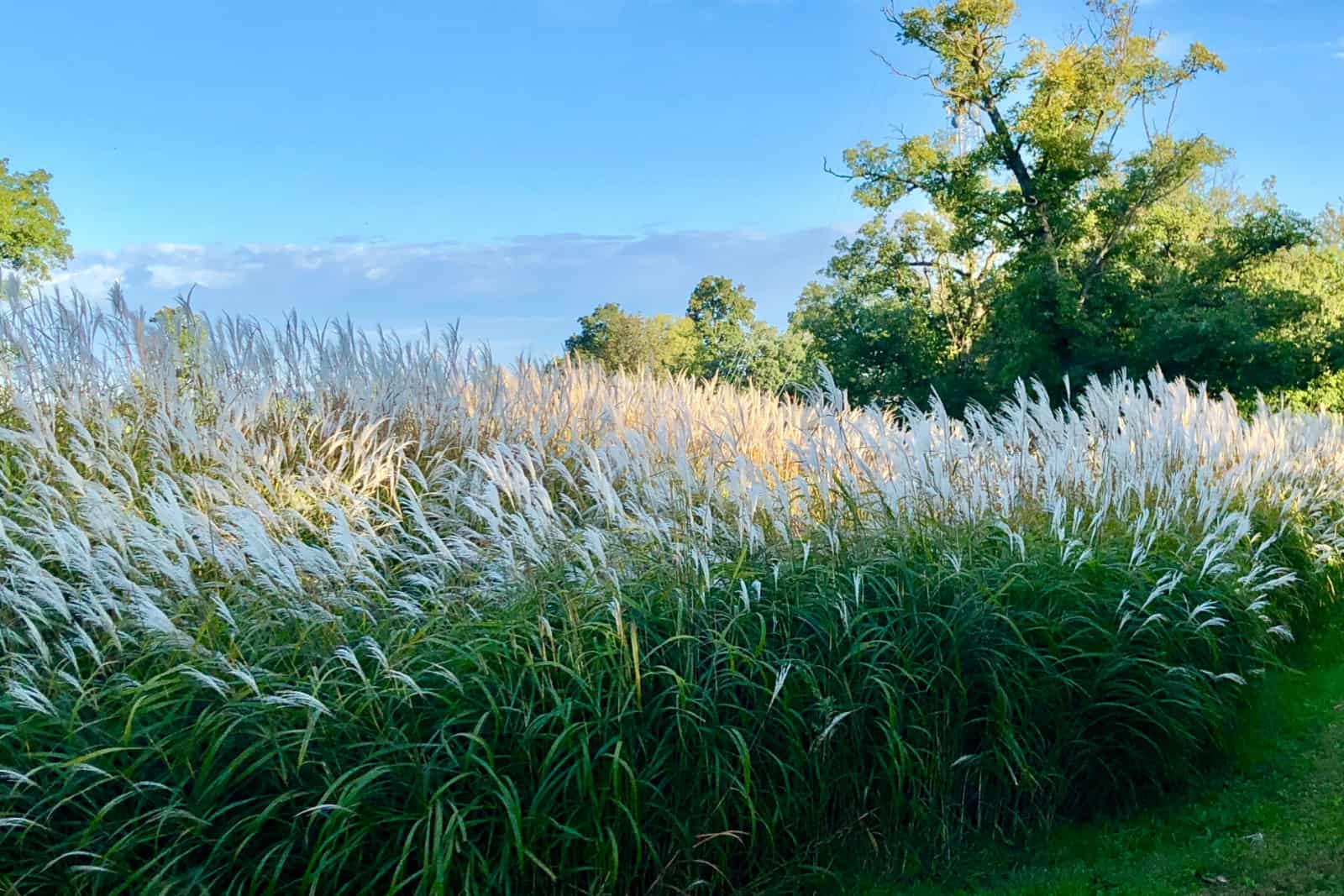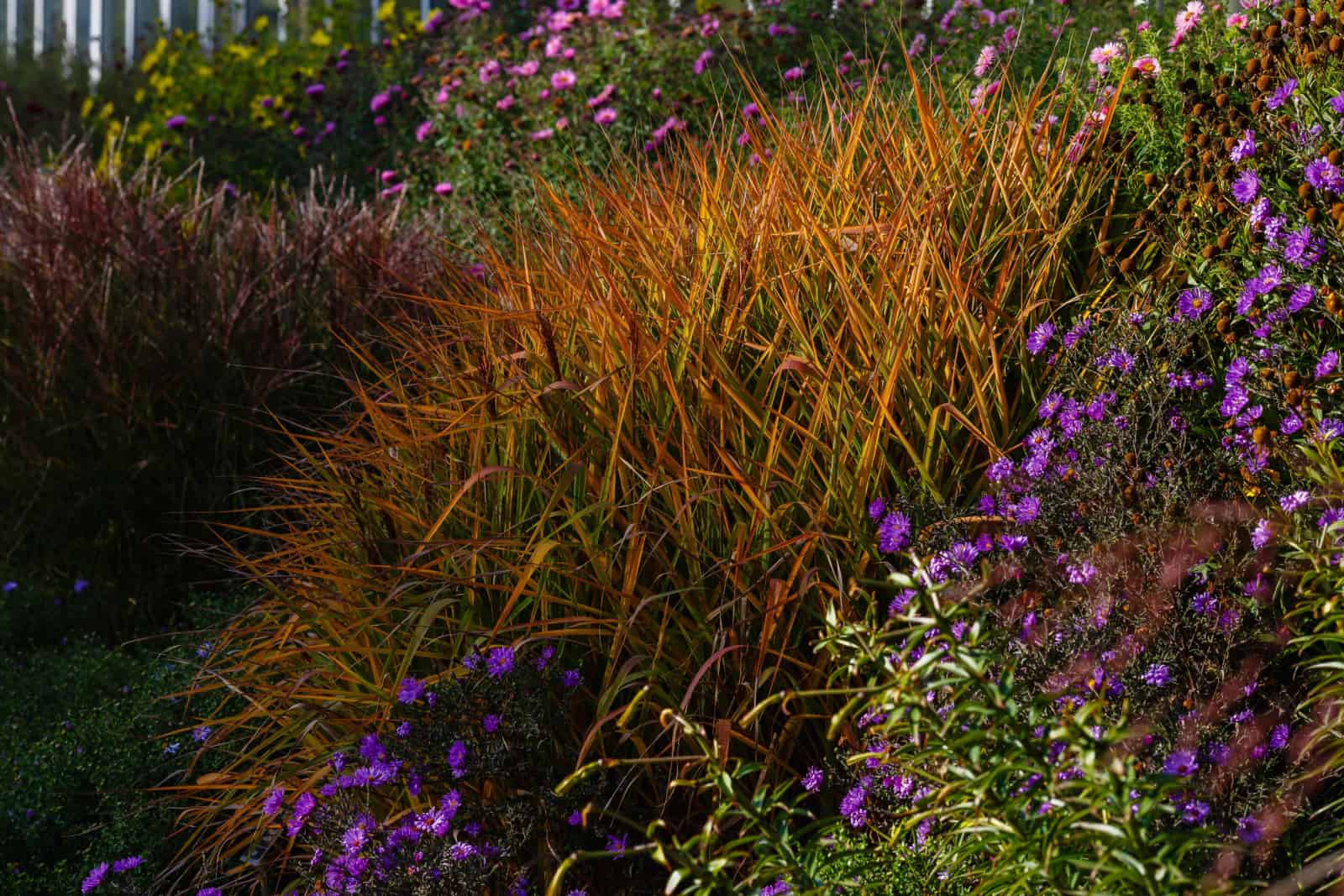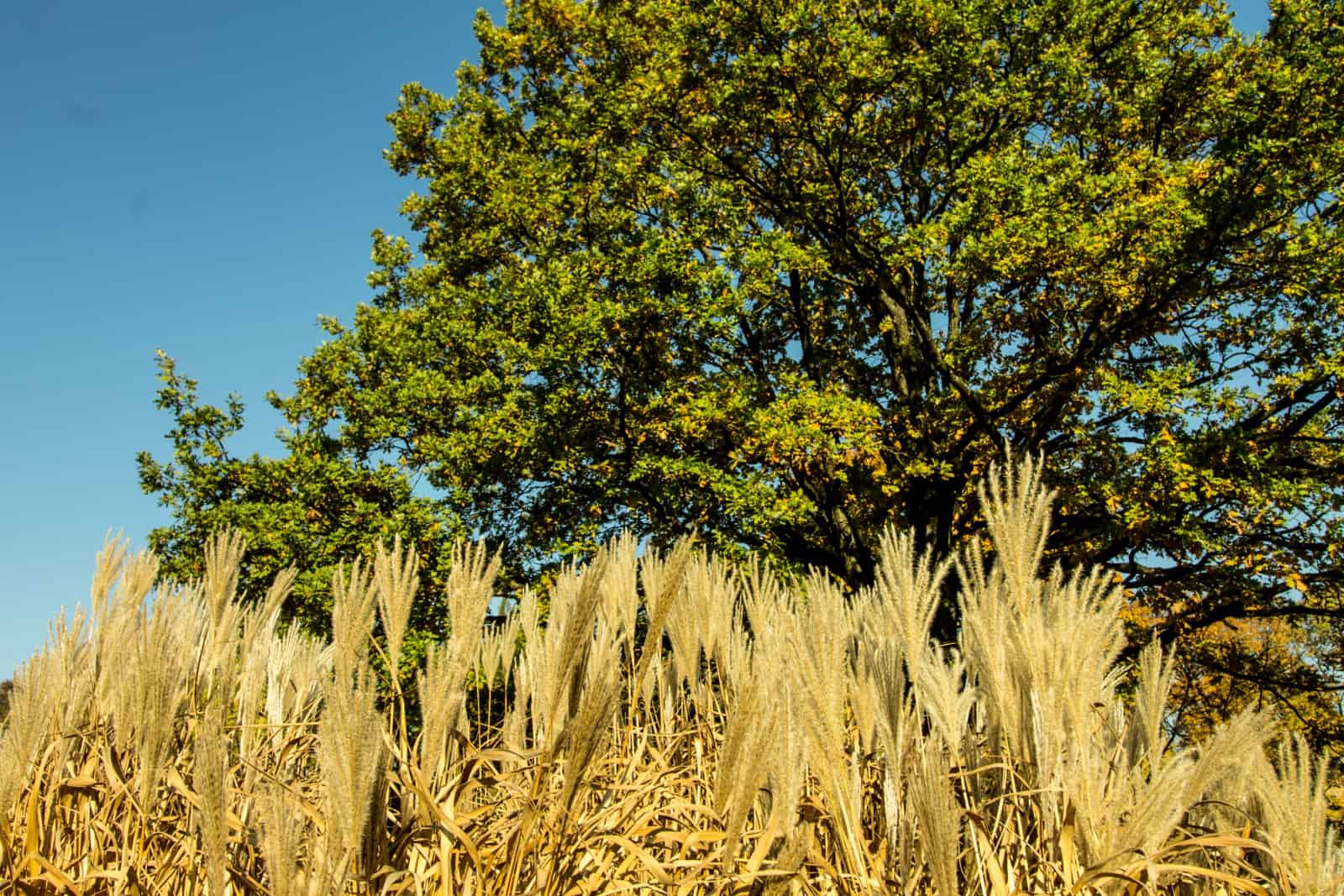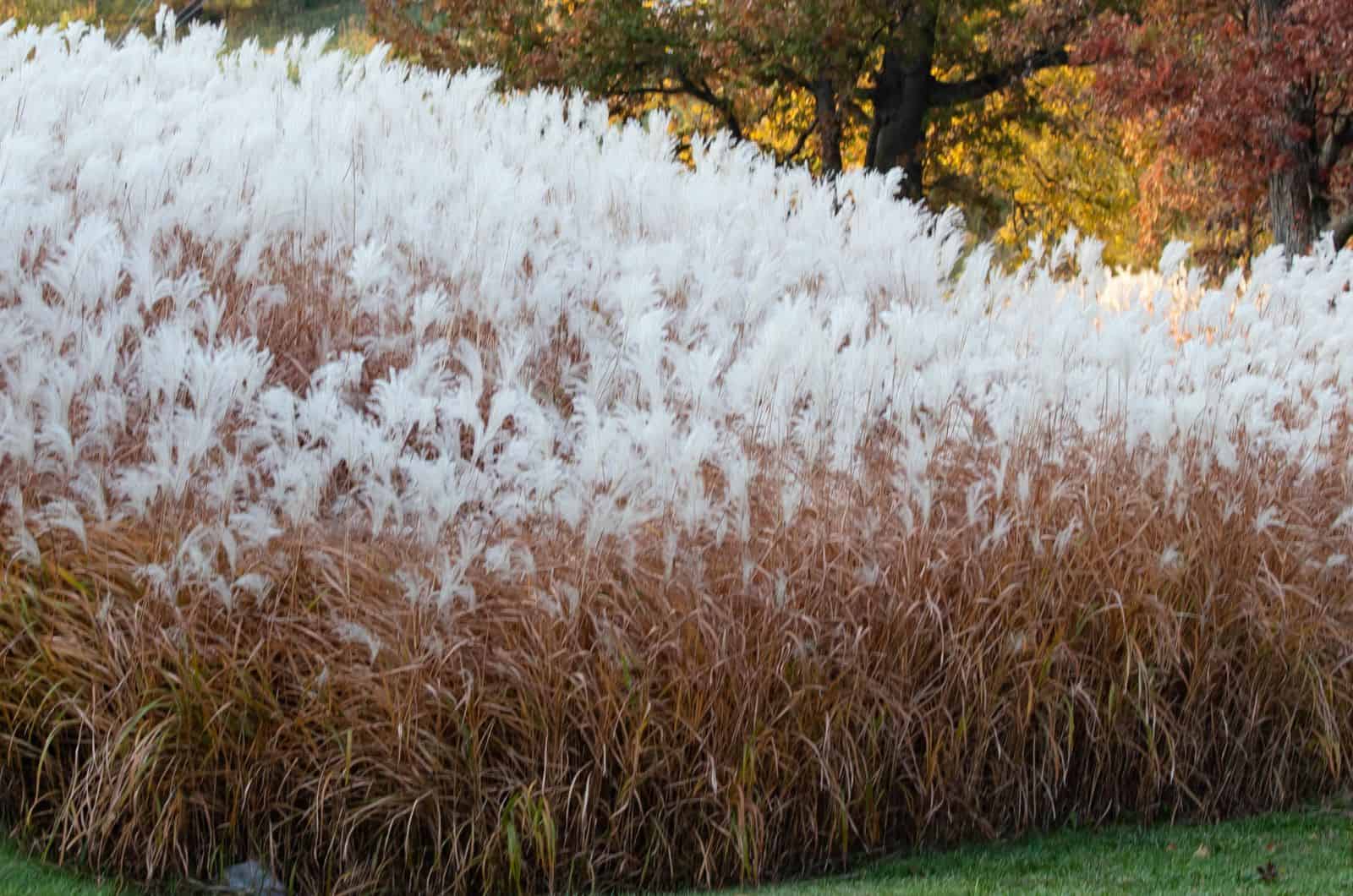Decorating your outdoor garden is one of the best parts of gardening. Combining your artistic side with decorating your outdoor area is so much fun!
When searching for plants for our gardens, we have our filters no matter the species. For instance, many people search for low-maintenance, pretty, and hardy plants. If you are looking for grass with these features, then I have the perfect one for you – flame grass.
This is one of the prettiest ornamental grasses you’ll ever find, and I’ll also give you a couple more great reasons to grow it. I’ll even show you how to plant and care for this amazing grass.
Let’s start with some basic info about flame grass.
| Family: | Poaceae |
| Genus: | Miscanthus |
| Scientific name: | Miscanthus ‘Purpurascens’, syn. Miscanthus sinensis Purpurascens |
| Common names: | Flame grass, Autumn red |
| Plant type: | Grass |
| Native habitat: | Asia |
| USDA hardiness zones: | 4-8 |
Let’s dive straight in!
Flame Grass: Features
Miscanthus Purpurascens, aka flame grass, is a clump-forming warm-season grass type. The clusters are reddish-green and develop into an arching structure.
Because of their flexibility, the leaves easily move in the wind, giving us a calm feeling. A clump of narrow leaves will eventually expand out and upward like a waterfall.
Autumn brings forth brilliant orange-red or magenta leaves on 3 to 4 feet tall clusters. Even when the leaves are dry, they look perfect.
The plumes eventually turn white, and remain so throughout the winter months.
The seedheads typically form in late summer or early fall.
As you may know, the growth rate of grasses depends on many factors, such as light, temperature, air pollution tolerance, and so on.
This grass has a medium growth rate, so if you provide it with the right conditions, you don’t need to wait for too long to see its true beauty.
How To Plant The Miscanthus ‘Purpurascens’
Before planting your flame grass, pay attention to sun exposure and the distance between plants. You need to ensure full sun for this grass to encourage healthy growth.
A spot with partial shade is an alternative.
I recommend spacing them around 20 inches apart to prevent overcrowding.
If you want to transplant the grass from a container to the soil, here’s how to do it.
First, make a hole in the soil that’s a similar size as the pot.
Take your flame grass out of the pot by tapping on the bottom of the pot. Prune the lower 2 inches of the root ball and put the grass clump in the hole. Don’t hold it by the tops because it can quickly break and cause the transplant to fail.
Make sure the crown is slightly above the soil surface and add more soil, but leave the crown uncovered. Pack it nicely and water it thoroughly.
How To Care For Flame Grass
The majority of grass types, including flame grass and fall-blooming reed grass, are really easy to maintain.
There are only a few things to watch out for. I’ll list all of them below so your Miscanthus ‘Purpurascens’ stays healthy for many years to come.
Light And Temperature
Correct light level is an essential thing to ensure for all grass types. Your grass will thrive if provided with a lot of full sun.
However, the excellent feature of this plant is that it will grow well in part sun. Therefore, you have many options when choosing the site.
Regarding temperatures, this Miscanthus plant is hardy in growing zones 4-8.
Soil And Watering
Luckily, this grass will grow well in a wide range of soils. I recommend growing it in well-drained soil types to avoid water accumulation and root rot.
Sandy soil will work great for this plant, which isn’t fussy about pH level.
Frequent watering is essential during the first stages of growth. It takes approximately a month to a month and a half until flame grass develops robust roots in the soil.
I recommend watering every 2 to 4 days during this period for the best results.
It typically takes a year for this plant to fully establish. This is drought-tolerant grass, but it will always appreciate moist soil. So, inspect the soil from time to time and add water if it’s too dry.
There’s no need to worry about the summer heat, as this grass will handle it great.
Benefits And Suggested Uses
As you can see, this is one of the easiest grasses to maintain; I dare say it’s one of the easiest plants to maintain in general.
That’s definitely one of its biggest benefits. But the great features don’t end there. If you leave the plumes through the colder months, they’ll be a good winter interest.
The fall colors of flame grass make the plant perfect for landscape design.
Due to the amazing foliage colors, this grass is perfect for cottage gardens, hedges, groundcovers, and mass planting.
It’s a deer-resistant and pollinator-friendly plant. The question on this grass I get most is related to invasiveness. Well, I have good news; it’s not an invasive plant!
The seedheads of this grass aren’t fertile, so there’s no need to worry about aggressive spreading.
I recommend removing the old leaves in late winter or early spring to encourage new flame grass growth.
FAQs
Is flame grass annual or perennial?
Scientifically known as Miscanthus Purpurascens, flame grass is a perennial plant hardy in growing zones 4-8. This means it will grow back every year, which makes it a perfect candidate for landscape design.
Do you cut back flame grass?
This is a warm-season grass type, so I recommend cleaning it up in early spring to enhance new growth and prepare it for the new growing season.
Wrapping Up
You should definitely add flame grass to your wish list. It’s easy to maintain, pollinator-friendly, deer-resistant, and not invasive.
It will fit perfectly in cottage gardens and make an amazing hedge. If you plant it in a well-drained soil type, ensure full sun or partial shade, and water it from time to time, it will grow healthy and be happy for many years.
Until next time!
Like this post? Share or pin it for later!

